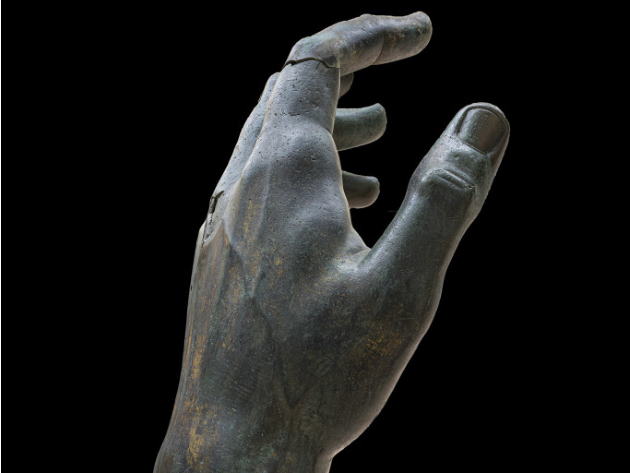
It was among the bronzes donated to the Roman people by Pope Sixtus IV in 1471, forming the first nucleus of the Capitoline Museums collection: the hand – with some missing parts – together with a massive head and a globe is what remains of a colossal statue of emperor Constantine, a superb testimony of Roman monumental statuary in late antiquity. Thanks to the collaboration with the Louvre museum, in the exhibition space of the Exedra of Marcus Aurelius it is now possible to admire the hand recomposed with the addition of two phalanges of the index finger.
Until the early 16th century, as evidenced by graphic testimonies, the hand was still complete in all its parts; only later do the first gaps appear, including the index without the two upper phalanges, considered irretrievably lost. All we know about the history of this fragment is that in 1863 it arrived at the Louvre museum together with some works of art belonging to Marquis Giampietro Campana, who had brought together one of the 19th century’s greatest collections of Roman and Greek antiquities. The discovery that the phalanges were part of Constantine’s hand dates back to 2018, thanks to a 3D model brought to Rome from Paris.
The recomposition of the hand thanks to the multi-year loan granted by the Parisian museum takes place on the occasion of a special anniversary: the 550th anniversary of the Sistine donation. For more information on admissions and tickets, please check www.museiincomuneroma.it. Online purchase is mandatory for access on Saturdays, Sundays and holidays within the day before.
Informations
From April 29, 2021 to November 9, 2025
Everyday 9.30-19.30
24 and 31 December 9.30-14.00
Last admission one hour before closing time
Closed
1 January, 1 May and 25 December
Before planning the visit, CONSULT THE NOTICES
 Condividi
Condividi











































